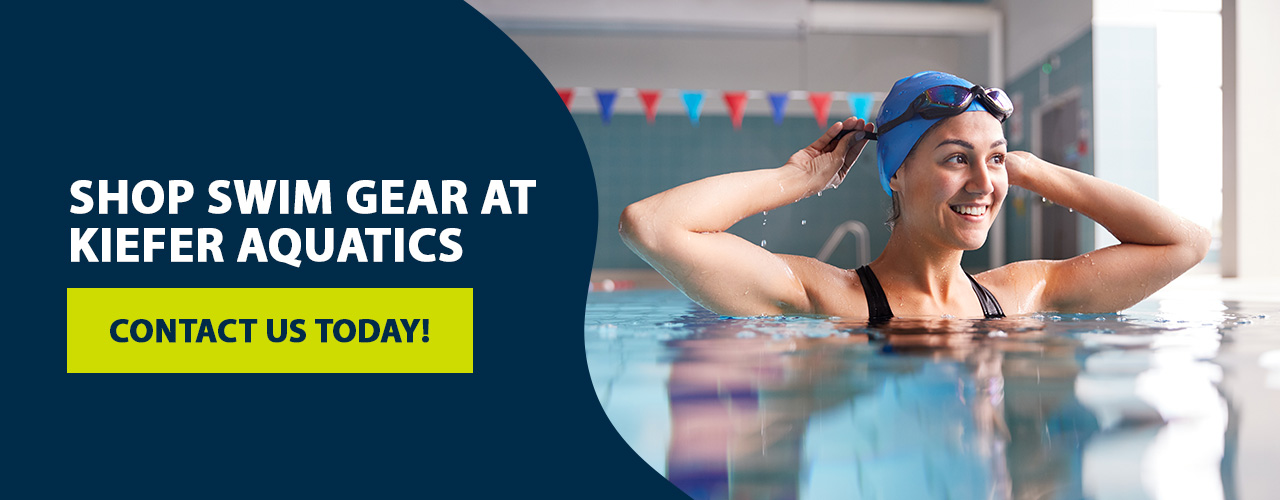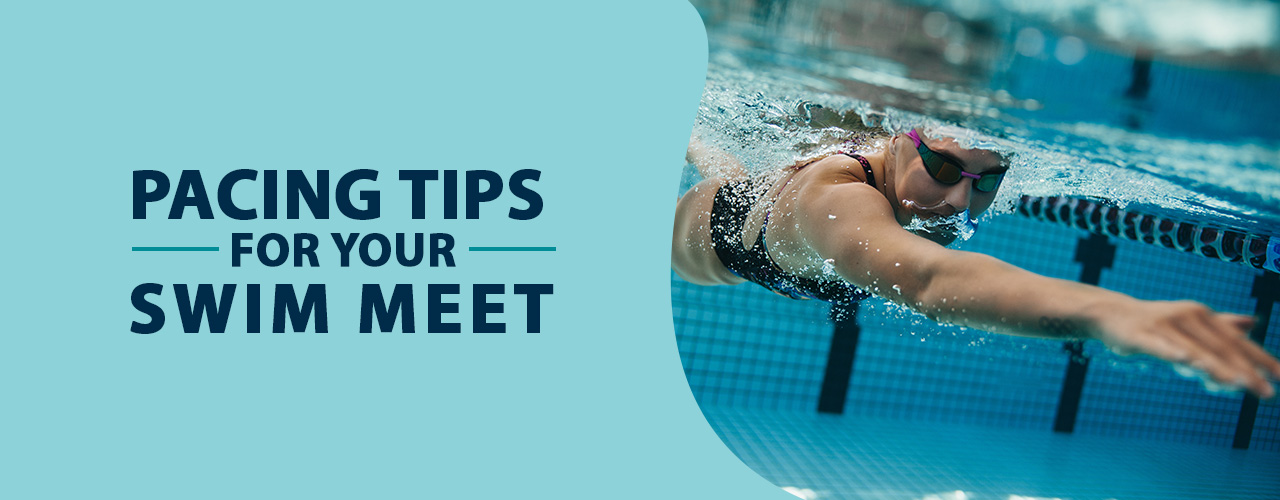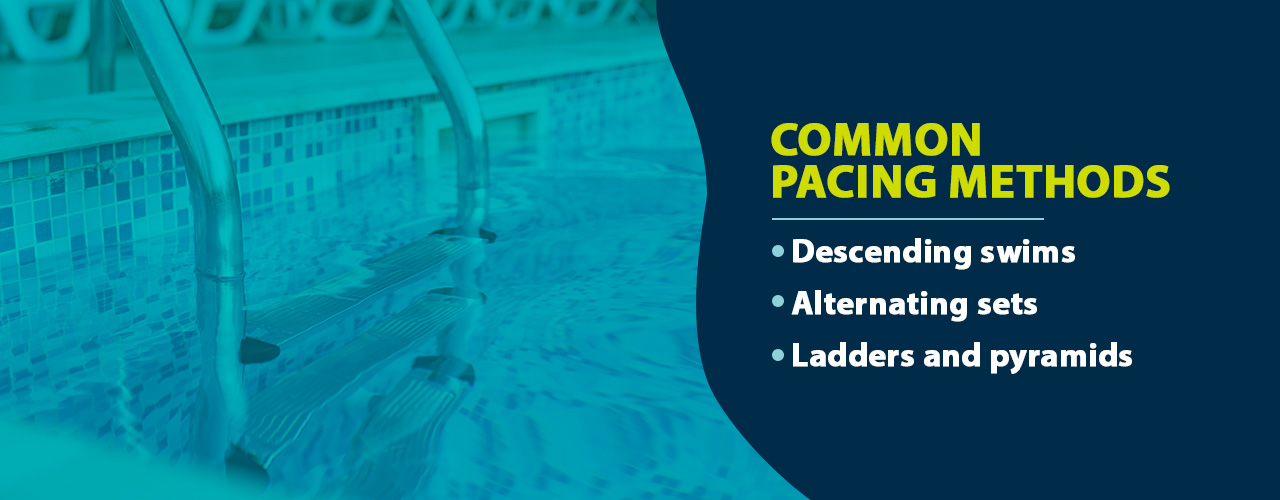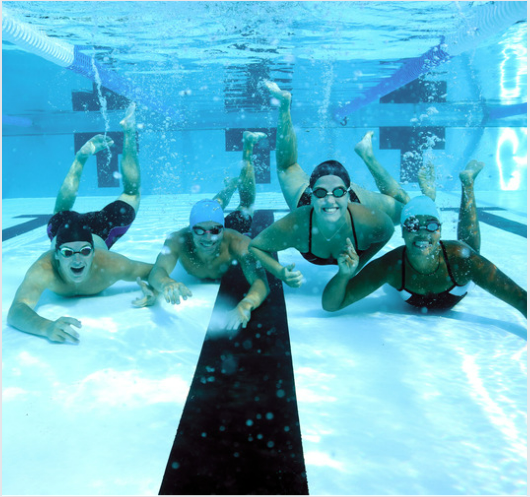Pacing Tips for Your Swim Meet

Swim Tips, Swimming News
|
October 24, 2022

Pacing Tips for Your Swim Meet
Whether you're a casual swimmer or training for a competitive meet, maintaining a sustainable swimming pace is a critical part of your success as you improve. Your pace is what will help you meet your goals, preserve your strength and become a more powerful, controlled athlete. Learn more below about the importance of a good swimming pace and tips for achieving it.Why Swim Pace Is Important
Swim pace is the best way to practice control over yourself while training and competing. It helps you avoid premature burnout and preserve the perfect amount of energy to help you cross the finish line or meet your lap time goals. For most competitive athletes — especially those engaged in long-distance swimming or triathlons — this precision is critical for success. Understanding and controlling your pace is also an effective way of reducing injury or excessive strain. When you're constantly pushing yourself to go as hard or fast as you can, it's easier to tear or strain a muscle. You may not immediately feel the warning signs in the water, either. By the time you realize it, you could've pushed your body too far, causing an injury that takes weeks or months to heal. All of this control also helps train your mind and body to be a more disciplined athlete. The more in-tune you are with yourself, the better you can set and achieve new milestones. Of course, pace isn't always necessary. Casual swimmers who hit the water for fun or stress relief don't have to worry too much about watching their speed. Most fitness swimmers, athletes, team members and professionals should find their pace except in certain circumstances. Engaging in activities like ultra-short race-pace training (USRPT), which focuses on exerting all available force and intensity for a short interval, doesn't require managing speed.What Is a Good Pace for Swimming?
No matter what type of swimmer you are, your ideal swim pace is one you can sustain for extended periods. Sustainability and longevity are key — not speed. Once you've secured your momentum and practiced with it, you should be able to maintain it regardless of speed, distance or other factors. Your swim pace also depends on things like:- Type of swimming: Though having a base pace is an essential starting point, you may need to adjust your goals depending on the type of swimming you're doing. Racing usually requires a different pace because you start with a dive, which crosses distances faster than starting with basic laps and no dive. The pool's length also matters — when you kick off walls more frequently in a smaller pool, you're going to move faster through the water.
- Personal and professional goals: For personal goals, you might set a pace that feels comfortable and push yourself to get better as your skills improve. Non-competitive fitness swimmers may aim for a baseline pace to reach a good heart rate zone. Professional and competitive swimmers will have a far different pace, adhering to industry standards, team goals and competition requirements.
- Fitness level: Never establish a pace you cannot safely sustain. Account for your current fitness and activity level and take it slow. Allot plenty of time to warm up and cool down.

Common Pacing Methods
Before finding and training with your pace, predict what your lap and set time will be. Then use a pace clock or pool timer to see how accurate you were. You can bridge the gap between your perceived and actual pace to establish a more sustainable, realistic baseline to build on. After confirming your base pace, incorporate a balance of speed and endurance drills into your training. Speed lets you play with your average pace and improve over time, while endurance sets enable you to practice setting and maintaining that same momentum regardless of distance. A few common pacing methods and practices include:- Descending swims: Descending swims focus on maintaining a consistent pace instead of slowing or increasing your speed. You start with a longer interval — like a 60-second lap — then gradually decrease the time by a few seconds each set while keeping your pace the same.
- Alternating sets: Alternating your sets between mild, moderate and intense swim intervals helps you train your body to start and stop without changing your pace.
- Ladders and pyramids: Ladder swim training is when you maintain a consistent pace while repeating and increasing your distance each time, keeping that same base momentum as you go. Pyramid training is when you repeat and reverse the ladder process by reducing your distance and maintaining the same pace.
How to Pace Your Swim
Here are some helpful tips for pacing during a swim:- Know what type of swimmer you are: Different types of swimming have different requirements. Sprinters go shorter distances at higher intensities, while long-distance swimming requires a steadier, more consistent momentum. You also need to know your body and what your average pace is for each swimming scenario to build muscle memory and set realistic expectations.
- Work with a coach or trainer: Work with a coach or swim trainer who can keep you accountable and offer an outside, non-biased measurement of your pace and achievements. You can learn the difference between your perceived exertion and your actual realistic pace.
- Mind your turns: One of the most challenging lap and race-pace swimming tips is minding your turns. If you're just starting competitive swimming or have yet to determine your pace, taking turns at the wrong time could interrupt your maintained speed.
- Be prepared: Maintaining a good momentum starts before you ever get in the water. Managed breathing is a critical part of keeping pace — incorporate plenty of breathing exercises into your training routine. Fuel up with nutritious meals and practice active recovery while you're in the water. Remember to be gentle with yourself and your expectations. When it comes to pace, sustainability is always more important than speed.
Shop Swim Gear at Kiefer
Learning how to find and maintain an adequate, sustainable pace is challenging, but it's a valuable technique for meeting your swimming goals. Investing in the right swim gear can help you find your pace and stay safe and comfortable while you train. Kiefer has all the swimming equipment you need for professional, competitive and casual swimming, with quality options from the industry's top brands. Shop our swim gear today to find just what you need.







Leave a Comment
Your email address will not be published. Required fields are marked *